| Type | Production year | Maker | Model maker |
| 9600 Honsyuu type | 1913-1926 | Kawasaki Dockyard | Tenshodo |
| 9600 Hokkaido type | 1913-1926 | Tenshodo | |
| C55 | 1935-1937 | Tenshodo | |
| C57 | -1947 | Tenshodo | |
| D51 Standard type | 1936-1947 | Tenshodo | |
| D51 Semi-stream standard type |
1936-1945 | Tenshodo | |
| D51 Semi-stream Touhoku type |
1936-1945 | Tenshodo | |
| D51 Standard type | 1936-1945 | KATO | |
| C62 | 1948-1967 | Tenshodo | |
| C62 | Tenshodo |
|
9600 Honsyu type. Ministry of Railway that was the JNR's past produced a tender-type steam locomotive 9600 between 1913 and 1926. Those pulled freight cars and had longest life until the abolition of steam locs. in Japan. |
| 9600 Honsyuu type without deflector(Tenshodo) |
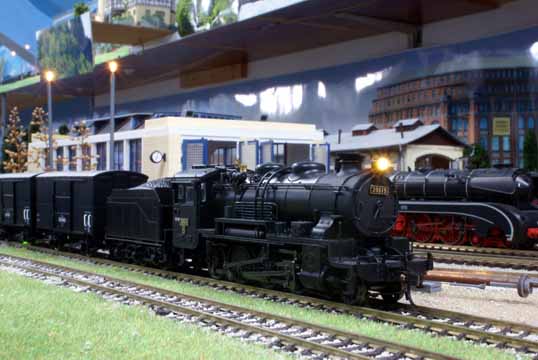 |
| 9600 Hokkaido type(Tenshodo). The front part of deflectors was cut to avoid accidents in very cold climate. Two head lights was equipped to ensure front field of vision, because it was used in the Iburi line where so many curves appeared.. |
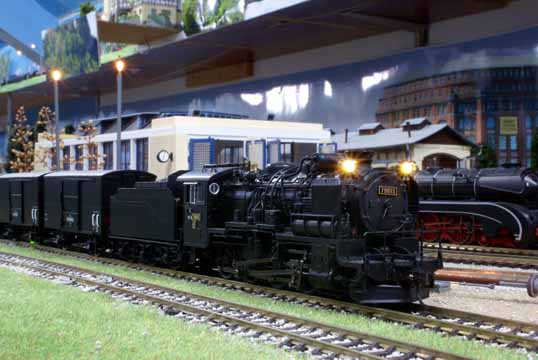 |
| C55(Tenshodo). JNR produced C55 to pull passenger cars between 1935 and 1937. The chief designer was famous Dr. Hideo Shima who also desighned D51 and Tokaido Shinkansen. |
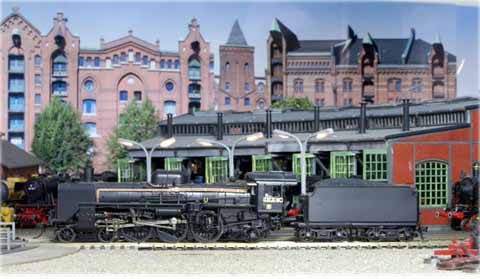 |
| C57(Tenshodo). C57 was the reformed one of C55, and produced number was 201 until 1977. |
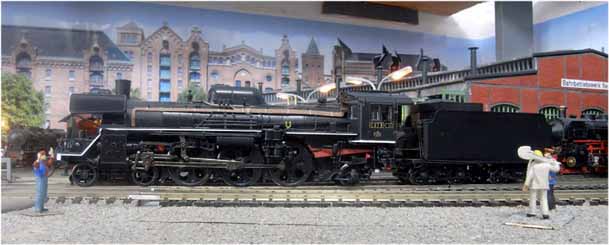 |
| D51(Tenshodo). Produced number of D51 was 1,115, the largest number in Japan between 1936 and 1945. Initially produced D51 has a dome of semi-streamline and pulled not only freight cars but also passenger cars especially in inclined lines. Standard type D51 200 is well preserved under live condition.in Umekouji Steam Locomotive Museum in Kyoto. |
| Tenshodo made D51 equipped with Quantum sound. The sound is recorded from
real D51 200 in Umekouji. The die-cast made housing is heavy, and this
contributed to the enough pulling power to pull dozens of freight cars.
Clic here to see long formation of freight cars pulled by coupled D51. |
| D51 semi-streamed standard type |
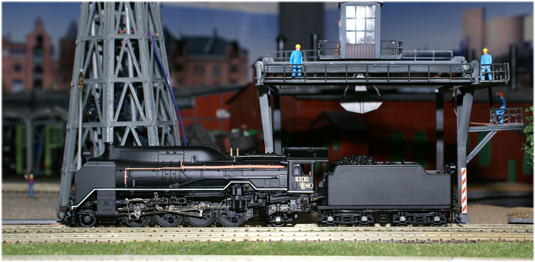 |
| D51 semi-streamed Touhoku type pulls wamu 9000 old type freight cars. Oil tank is equipped on the tender. |
(scene)-2.jpg) |
| Standard D51(Tenshodo). The decorder is much improved, and room lump can be turned on and off by a handy controller. |
| C62(Tenshodo). D51 was excess in number after the World War II, and the boiler of D51 was diverted to C62 for passenger use. The first C62 appeared in 1948 in Kasado Factory of Hitachi Co. Total production number was 49. The output of driving wheels is 1,620 horsepower, being increased 26 % from that of C59. The world record as a narrow gage loc. of 129 km/h was obtained at 1964 on Kiso River Bridge. C62 was a leading locomotive at that time and the limited express named "Swallow" appeared in 1960 run between Tokyo and Osaka, and was looked enviously. C62 was deregistered step by step in 1967. |
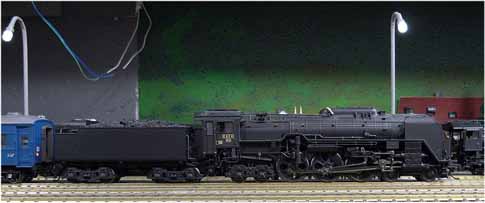 |
| C62 pull suha 42 old passenger cars. This is a reproduced scene of my childhood. |
-s.jpg) |
  |